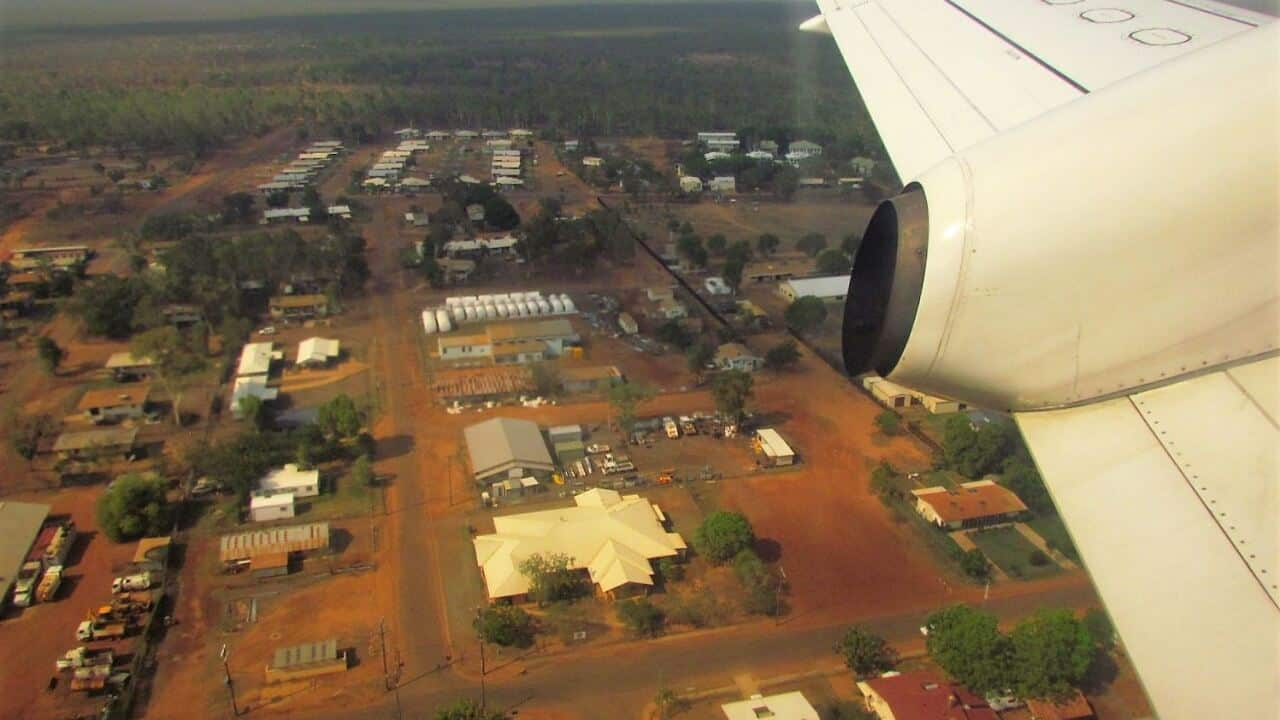Traditional Owners have slammed the Northern Territory Government's approach to water extraction, saying their voices are being ignored regarding two major allocation plans that put sensitive waterways at risk.
In the week before Christmas, the Government released the and water allocation plans.
The Mataranka plan poses a doubling of the current extraction from the ancient aquifer connected to the Roper River system, including the springs at Mataranka.
That would equate to more than 62,000 megalitres of water per year.
Northern Land Council chair Matthew Ryan described the Mataranka Water Allocation Plan as an absolute failure.
"It’s dismissive of the environment and our culture," he said.
“Both the previous and the current NT Government have ignored the voices of Traditional Owners, who have repeatedly said that the health and viability of the Roper River and the springs at Mataranka are at great risk.
“Water is life.
"It is our most valuable resource and Traditional Owners have an obligation to take care of the land and areas of cultural significance."
READ MORE

Traditional Owners in NT water fight
The Central Land Council said they were deeply concerned about the timing and manner of the announcement by NT Minister for Water Joshua Burgoyne of significant changes to the Western Davenport Water Allocation Plan, which increased extraction from 67,700 to 87,700 megalitres per year.
“There was no warning of the changes announced just before Christmas and no effort by the government to speak to Traditional Owners," CLC general manager for professional services Dr Josie Douglas said.
“In recent years, the Central Land Council has urged the government to consult Aboriginal people appropriately and regularly about water planning and decision making – not just pay lip service to Australia’s First People, who have had stewardship of the lands and waters of the Western Davenport region for millennia and whose future livelihoods, culture and sustainable living depends on water.”
Mr Burgoyne said the two water plans would provide certainty to the environment and water users.
“Both of these plans have been developed using the best available science and a comprehensive understanding of the water resource," he said.
Health of the system in question
Professor Quentin Grafton, UNESCO chair in Water Economics & Transboundary Water Governance and Director, Centre for Water Economics said the plan allowed for unsustainable groundwater extractions, enough water to fill 25,000 Olympic swimming pools per year.
“The big time beneficiaries of the plan are the big end of town who have lobbied long and hard to get, for free, NT groundwater licences worth many millions of dollars," he said.
"The biggest losers are the Traditional Owners from where the groundwater is being grabbed and the many tourists who come to visit the world-famous Mataranka and Bitter Springs, and on those who depend on their dollars for their livelihoods.
“The plan goes against published evidence of declining groundwater tables, submissions and testimonies of Traditional Owners about worsening water quality, and the precautionary principle, a hallmark of sustainable management.”
Mr Burgoyne said the Mataranka Water Allocation Plan 2024-2034 would preserve more than 90 per cent of the dry season flows to the river.
“The plan protects the environmental value of the Roper River and iconic springs, providing water security to communities, and supporting economic development, including in the Larrimah agricultural precinct," he said.
The Minister maintained that the Western Davenport Water Allocation Plan leaves the majority of the water in the aquifer untouched, using only 0.6 per cent of the groundwater storage per year.
Traditional knowledge ignored
Mangarrayi woman Cecilia Lake said the Mataranka Water Allocation Plan ignores Traditional Owners' observations, knowledge of networks of interconnected ground and surface water flows, experience in sustainable management, and history of caring for Country.
“Already the Roper River is facing unprecedented development pressure from large-scale water extraction and fracking for gas," she said.
"Our sacred sites are being affected, bush tucker and animals are leaving, the river levels are dropping, springs are turning green, and the land is drying."
Mr Ryan said for many years the Ngalakgan, Alawa, Mangarrayi, Ngandi, Marra, Warndarrang, Nunggubuyu, Ritharrngu-Wagilak and Rembarrnga people have protested the Mataranka water allocation plan, calling for a ban on all further water extraction.
"However, their words have fallen on deaf ears," he said.
“There’s clearly no forward-thinking going on here.
"This is not only very disrespectful to the Traditional Owners, but to all Territorians who are relying on us to create a healthy and sustainable environment for future generations.”
Mr Burgoyne also scrapped the requirement to refer all Environment Management Plans for petroleum activities to the NT Environment Protection Authority, saying the Government was acting on advice of the body's chair, Dr Paul Vogel.
“This does not remove the NT EPA’s ability to call in any project application for formal assessment, nor does it remove my right to request the NT EPA’s advice for specific proposals,” Mr Burgoyne said.















